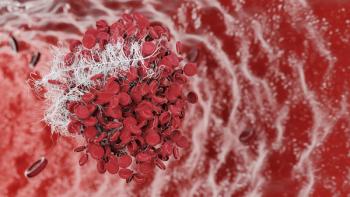
- October 2021
- Volume 87
- Issue 10
Case Studies: October 2021
Case 1
TN, 35-year-old obese woman with a body mass index (BMI) of 32.4 kg/m2 and uncontrolled type 2 diabetes is starting on an atypical antipsychotic today for the management of schizophrenia. The pharmacist receives a call from TN’s psychiatric nurse practitioner (NP), who has questions about drug selection. The NP mentions that TN’s drug formulary lists aripiprazole, haloperidol, olanzapine, and quetiapine as tier 1, preferred options. The NP wants the pharmacist’s opinion on which atypical antipsychotic may be most appropriate to prescribe.
What should the pharmacist suggest?
A: Atypical antipsychotics can increase the risk of metabolic effects because of antagonism of the H1 and 5-HT2C receptors. Because TN has glucose dysfunction and is obese, the pharmacist should recommend the atypical antipsychotic with the least potential for metabolic adverse effects. Haloperidol is a conventional antipsychotic and should not be prescribed if the intent is to select an atypical antipsychotic. In a recent systematic review and network meta-analysis, aripiprazole was the only antipsychotic to show no evidence of change or improvement in metabolic parameters, such as dyslipidemia, glucose dysfunction, or weight gain compared with the placebo.1 Olanzapine and quetiapine were associated with increases in BMI and weight, whereas olanzapine was also associated with changes in glucose. The pharmacist can recommend aripiprazole for TN and suggest that the NP monitor for metabolic changes at baseline and every 12 weeks thereafter.2
REFERENCES
- Pillinger T, McCutcheon RA, Vano L, et al. Comparative effects of 18 antipsychotics on metabolic function in patients with schizophrenia, predictors of metabolic dysregulation, and association with psychopathology: a systematic review and network meta-analysis. Lancet Psychiatry. 2020;7(1):64-77. doi:10.1016/S2215-0366(19)30416-X
- American Diabetes Association; American Psychiatric Association; American Association of Clinical Endocrinologists; North American Association for the Study of Obesity. Consensus development conference on antipsychotic drugs and obesity and diabetes. Obes Res. 2004;12(2):362-368. doi:10.1038/oby.2004.46
Case 2
JB is a 65-year-old man who has had a swollen big toe and extreme pain for the past 4 days. The area is erythematous and tender. Laboratory results show elevated uric acid levels. Urate crystals are found in the synovial space, confirming a physician assistant’s (PA) suspicion of gout. JB has a medical history that includes severe renal insufficiency and well-controlled hypertension. The PA wants an opinion on the best treatment for gouty arthritis.
What should the pharmacist recommend?
A: Guidelines suggest treating acute gout flares with colchicine, glucocorticoids, or nonsteroidal anti-inflammatory drugs (NSAIDs). No agent is preferred to another, so the choice should be based on patient-specific factors. Before making a recommendation, the pharmacist should collect additional information from the PA, such as JB’s renal function, the stability of his renal function, concomitant medications, and history of gout flares. Because JB has been in pain for 4 days, colchicine may not be the best choice because its efficacy may be reduced if not taken within the first 12 to 36 hours. Because he has documented renal dysfunction, avoiding NSAIDs would also be advisable. The pharmacist should recommend prednisone 40 mg daily until the flare resolves. Tapering may be required depending on the duration of use. Applying ice to the affected area can also help minimize inflammation and pain.
REFERENCE
FitzGerald JD, Dalbeth N, Mikuls T, et al. 2020 American College of Rheumatology Guideline for the Management of Gout. Arthritis Care Res (Hoboken). 2020;72(6):744-760. doi:10.1002/acr.24180
Stefanie C. Nigro, PharmD, BCACP, CDCES, is an associate clinical professor at the University of Connecticut School of Pharmacy in Storrs.
Articles in this issue
about 4 years ago
OTC Case Studies: Inflammatory Bowel Diseaseabout 4 years ago
Generics and Biosimilars Have Critical Differencesabout 4 years ago
Pet Peeves: October 2021about 4 years ago
Clinical Pharmacology Update: Brexafemme From Scynexis, Incabout 4 years ago
October 2021 OTC Product Newsabout 4 years ago
CGM Improves Outcomes for Patients Using Only Basal Insulinabout 4 years ago
Pharmacies Play Key Role as Center of Immunization ServicesNewsletter
Stay informed on drug updates, treatment guidelines, and pharmacy practice trends—subscribe to Pharmacy Times for weekly clinical insights.










































































































































































































